We may receive a commission when you use our affiliate links. However, this does not impact our recommendations.
We all enjoy a good woodworking project plan. We all love to see a flashy picture of expertly made furniture. Some of us, in fact, can’t get enough of all that – so we write about it all week long. But I believe our interests, as woodworkers and readers, run a lot deeper than plans and pictures. Above all, we want tools – physical tools for woodworking and mental tools to make the work easier. That’s why I started investigating the world of blacksmithing. As it turns out, there are many kindred spirits in the community – especially when it comes to blacksmithing tools and making homemade tools. When you reach the point of standing in front of a forge and anvil, hammering hot metal, you know you are somewhere near the absolute starting point of modern craft.
If you don’t already know Brian Brazeal, look him up and connect with his school in Brandon, Mississippi. Brian epitomizes the goal of bringing “old methods,” as he puts it, into the modern world. He does not teach a project class in his school. Instead, he teaches students a course that he calls “Tools for Making Tools.” Students revive traditional blacksmithing techniques, learn them well and leave with a basic set of blacksmithing tools that they have made themselves. This set includes the rounding hammer, a hardy, a hammer eye punch and fullers.
Brian is not only perfecting his own craft and helping grown-ups to revive blacksmithing; he is also teaching the next generation through his group International Young Smiths. We think of blacksmithing as an exclusive club of burly, middle-aged men. Brian explains that with the right technique, relatively smaller people can learn to do it well. Alec Steele, who started blacksmithing as a teenager in the United Kingdom, is a perfect example. Alec is still in high school and is already teaching the craft to others. He says one of his main goals in this is to “inspire other people.” I think you’ll agree that both he and Brian are doing a great job of that!
As woodworkers, we have the opportunity to apply the same concept to our craft. We can branch out into the making of both woodworking hand tools and woodworking hardware, then use those results in our tree-based projects. For me, while I don’t mind using a well-made tool that I have bought from someone else, I do find that applying store-bought hardware to a project is often a bit dissatisfying. If you feel the same way, and are ready to take the plunge into blacksmithing, take a look at our new Peter Ross DVD, “Forging a Custom Hinge.” And if you are more into the tool-making side we also have Peter’s “Forging a Compass.”
I believe in a good mix of woodworking project plans, flashy furniture pictures and an in-depth look at tools and techniques. So don’t worry. We’re not going to go off the deep end with the blacksmithing topic. But if you are interested we’d love to see your comments below and, again, be sure to look up Brian Brazeal and his school.
–Dan Farnbach
Here are some supplies and tools we find essential in our everyday work around the shop. We may receive a commission from sales referred by our links; however, we have carefully selected these products for their usefulness and quality.



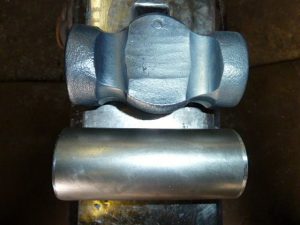
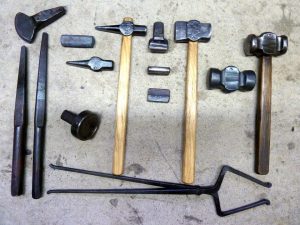
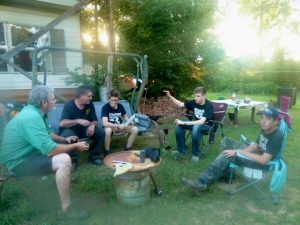
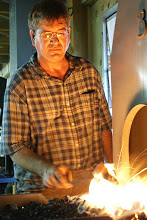




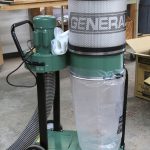

Hello Dan,
This is Blake here from the 2013 International Young Smith team. I would like to thank you for a great article 🙂 I love blacksmithing and I intend to continue! Tools are an important thing to all trades, and a good hand made tool is something to be appreciated! One little thing, I think the word “handmade”, rather than homemade would fit the title better.
Good day! Thanks again,
Blake
P.S. – I’m the one in camouflage pants in the 3rd picture down, sitting in a chair.
Dan,
I think you may find a greater interest in smithing than is apparent by the meager comments on this post. I myself am an avid amateur smith, and I know of tons of guys who likewise dabble in the craft. As I think about it, most are also involved in longrifle building, which seems to lead to a plethora of crafts from stock making and carving, to inlays and scrimshaw. Then there are guys like me, who started from the tool making perspective. Which invariably leads to refurbishment, and in some cases machine work, and ultimately plane making…(I think that’s the natural progression!)
There is probably a larger group of craft polymaths than one might suspect. The more I think about it, the more people I know fall into that category. Many are self sufficient types, others are cheapskates, and some are artists.All of them love to work with their hands, and enjoy making “things.” But in the grand scheme of things, they are still a tiny percentage of the whole population.
Come to think of it, someone we know would call us: “Aesthetic Anarchists!”
Good stuff Dan!
Thanks,
Albert A Rasch
Dan, I want to thank you for this article. I am a new comer to working with wood and iron. I became interested in working with wood almost 2 years ago now. A little over a year ago I met a gentleman who has almost 80 years of daily turning experience under his belt who has taught me how to turn, and more about other forms of woodworking. He also taught me about his finger chucks, and a number of other accessories I use daily on my lathe, including making of tools that fit the pieces I’m turning.
A year ago in May I picked up my first cross peen hammer, heated iron in a coal forge, and struck the hot iron against an anvil. With the help of a number of blacksmiths I hang out with now when I can I am learning more that will lead to hinges, handles, and hand forged nails. I am starting to work on learning how to heat and quench the iron to make tools that sharpen well and hold an edge.
In my appreciation for the lessons I have started making wooden mallets, which have been received with great appreciation.
After reading your article, I no longer feel like a pariah in the woodworking community. My philosophical approach to learn how to be self-sufficient in woodworking and blacksmithing seems to maybe more in line with those who have much more experience than I currently possess. Thanks your writing was encouraging that I am going in the right direction.